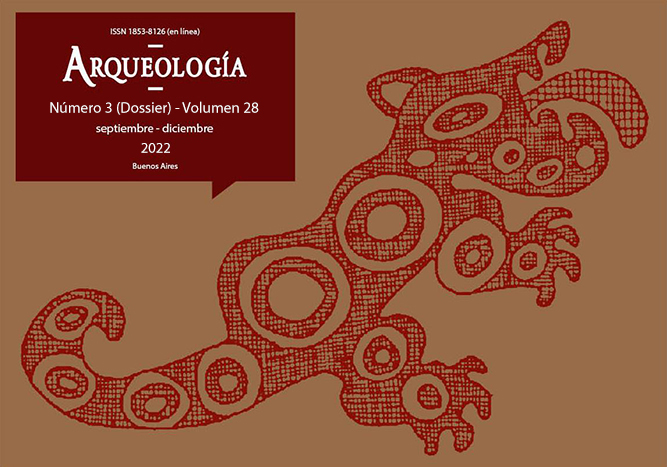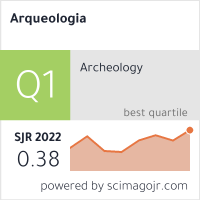San Miguel de Ibarra, ancient Caranqui (Ecuador), appropriation of the sacred center and destruction of the symbolic path
Abstract
In the North Andean region, headquarters of the ancient Cayambi, Caranqui, Pasto, and Quillacinga nations, modern (historiographic, ethnohistoric, archaeological, anthropological) studies verified that their civilization process appears decontextualized, not only from the cultures in its adjacent areas, but also from those of the central and southern Andes regions that were present during the millenary process of autarkic evolution of the Andean civilization. The review of the studies carried out in this region is based on the use of parceled approaches and imported categories of analysis that emphasize empires, ethnic dominions or chiefdoms, and cities, which in our opinion, blur their legacy of knowledge, in addition to distorting the understanding of the symbolic space, showing them divorced from the Andean civilizing process. In this context, the study of the ancient Caranqui, today San Miguel de Ibarra, proposes new interpretations, or the “deconstruction” of the chronicles of conquest, in accordance with the principles of the original nations that contradict the official accounts. In fact, an insightful reading of the chronicles themselves, along with the search for cultural traces impregnated in the ordering and symbolism of the space, expressed in a series of clues, which added to the archaeological remains (architectural constructions: pyramids and pucarakuna; ceramic, lithic metallurgical objects, and others), ritual manifestations at solstices and equinoxes, and artistic or handicrafts, which are made today, intertwined from a way of seeing and understanding the world, make it possible to demonstrate the wisdom of their creators, and give meaning to its cultural legacy.Downloads
References
Borchart de Moreno, C. R. (2007). El Corregimiento de Otavalo: Territorio, población y producción textil 1535-1808. Otavalo: Universidad de Otavalo.
Bray, T. y Echeverría, J. (2010). La Arquitectura del poder: investigaciones en el sitio imperial Inca-Caranqui, cantón Ibarra, provincia de Imbabura. Informe anual, Fase III. Instituto Nacional de Patrimonio Cultural. Manuscrito inédito. https://downloads.arqueo-ecuatoriana.ec/ayhpwxgv/informes/Informe_Caranqui_2010.pdf (Acceso: 5 de octubre, 2022).
Cieza de León, P. ([1553] 1984). La crónica del Perú. Madrid: Historia 16.
Lozano Castro, A. (2016a). Quito –Quitu– El Oculto legado ancestral: imagen simbólica del centro ecuatorial. Quito: Comunidad Epistémica de Saberes Ancestrales / Universidad Central de Ecuador / Editorial Don Bosco.
Lozano Castro, A. (2016b). Guapondelik, Tumipampa, Cuenca. Huellas culturales y transformación territorial. Cuenca: Dirección Municipal de Cultura, Educación y Deportes / Editorial Don Bosco.
Lozano Castro, A. (2017). Tiwanaku –Tihuanaco– Titikaka, Chuquiuitu. El misterio develado. Quito: Comunidad Epistémica de Saberes Ancestrales / Universidad Central de Ecuador / Editorial Don Bosco.
Lozano Castro, A. (2018). Caranqui –Ibarra– Transformación simbólica del centro sagrado. Quito: Comunidad Epistémica de Saberes Ancestrales / Universidad Central del Ecuador / Editorial Don Bosco.
Mamián Guzmán, D. (2004). Los Pastos en la danza del espacio, el tiempo y el poder. Pasto: Universidad de Nariño.
Murúa, M. de ([1613] 1986). Historia General del Perú. Madrid: Historia 16.
Revista Abanico (27 de julio, 2015). Sensibilidad ISO: Fiesta del Señor del Amor. Revista Abanico: pequeños empresarios con buenas ideas, 3, 19-25. https://issuu.com/gaudiumeventos/docs/abanico_ed._3 (Acceso: 5 de octubre, 2022).
Santillana, G. y von Dechen, H. (1969). Hamlet’s Mill: An Essay on Myth and the Frame of Time. Boston: Gambit.
Ulloa, A. ([1748] 1990). Relación histórica del viaje hecho de orden de su Majestad a la América Meridional. Madrid: Historia 16.
Velasco, J. (1996). Historia del Reino de Quito en la América Meridional (Tomo II, Parte II). Quito: Imprenta de Gobierno.
Yurevich, V. y Marín Ricoy, D. (Eds.). (2005). Astronomía en la América Precolombina. Moscú: Editorial URSS.
Zborever, D. (1996). El Conocimiento equinoccial por aborígenes de este lugar. Boletín del Observatorio Astronómico de Quito, 16(3), 24-36.
Copyright (c) 2022 Alfredo Lozano Castro

This work is licensed under a Creative Commons Attribution-NonCommercial-ShareAlike 4.0 International License.
Authors who publish in this journal agree to the following conditions:
- Authors retain copyright and yield to the journal right of first publication with the work registered with attribution license Creative Commons, which allows third parties to use the published always mentioning the authorship of the work and first publication in this magazine.
- Authors can make other independent and additional contractual arrangements for the non-exclusive distribution of the version of the article published in this issue (p. Eg., Inclusion in an institutional repository or publish it in a book), provided that clearly indicate that the work was published for the first time in this magazine.
- It allows and encourages the author / s to publish their work online (eg institutional or personal pages) before and during the process of revision and publication, as it can lead to productive exchanges and greater and more rapid dissemination of work published (See The Effect of Open Access).





(1)13.png)






1.jpg)
1.jpg)


13.png)
1.png)


(1)1.png)









